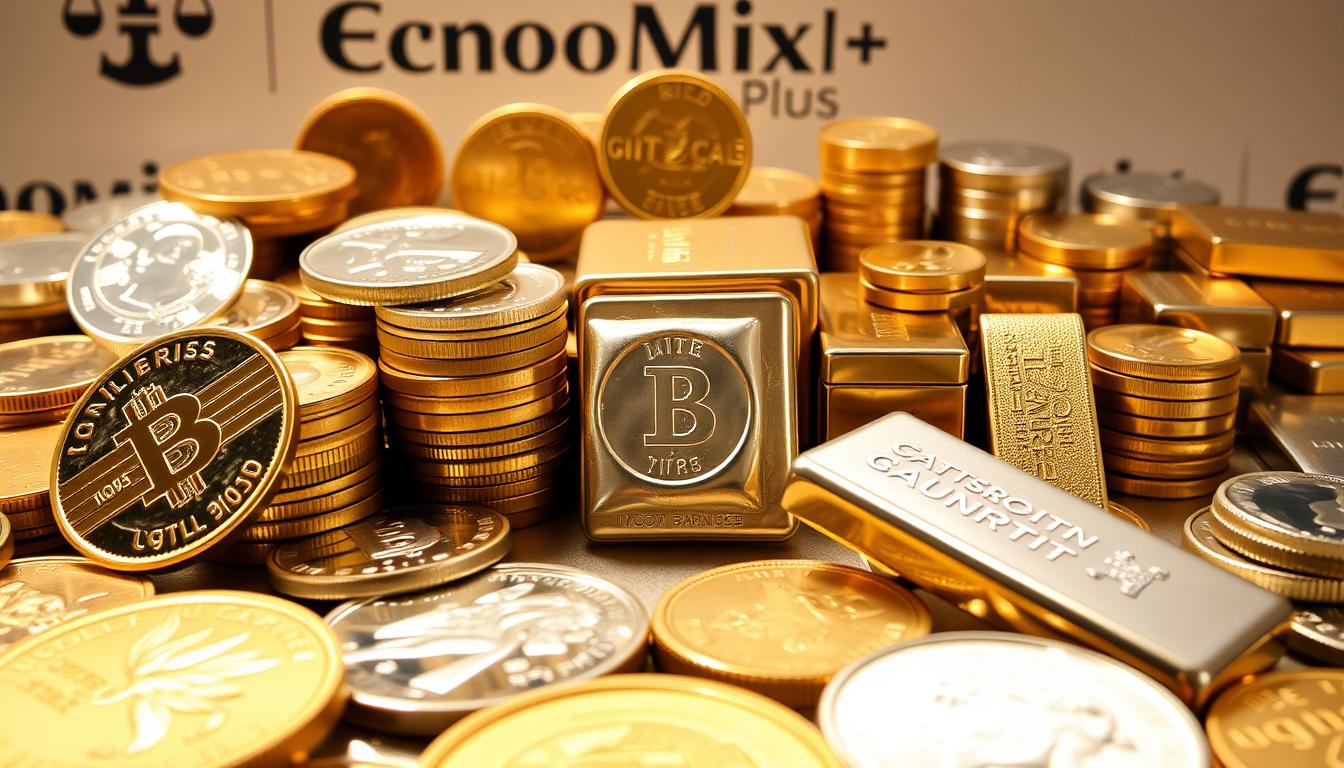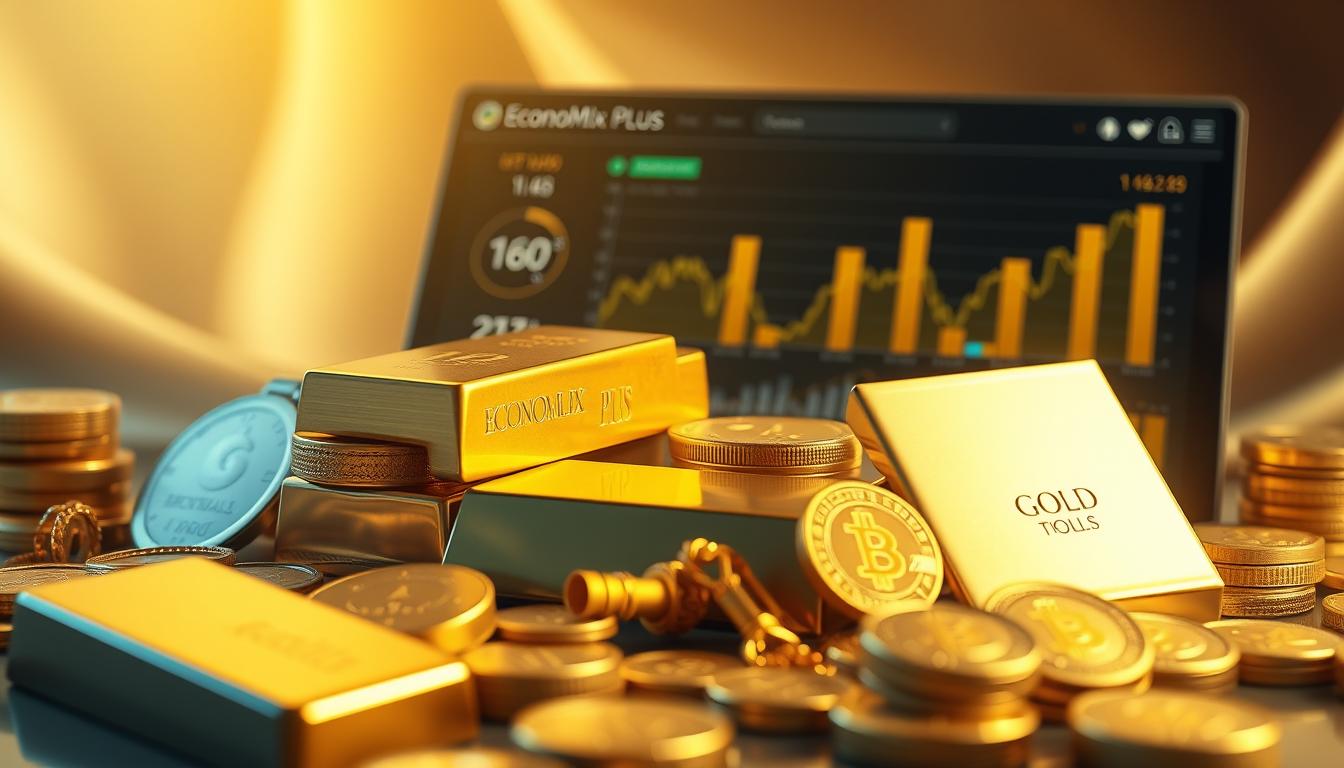When it comes to investing in precious metals, one question often arises: which one converts to cash faster? Understanding the liquidity of gold and silver is crucial for investors looking to make quick decisions. Both metals have unique market dynamics that influence their selling speed.
In 2024, the gold-silver ratio stands at 87:1, a significant metric for traders. This ratio highlights the differences in market value and demand between the two metals. While gold is often seen as a safe-haven asset, silver has shown recent outperformance due to its industrial applications.
Storage costs and liquidity also play a role in resale decisions. Physical ownership of these metals comes with security concerns, while ETFs offer easier access. Knowing these factors can help you decide which metal aligns with your investment goals.
For a deeper dive into how these metals perform during economic shifts, check out this analysis.
Key Takeaways
- The gold-silver ratio is currently 87:1, influencing trading decisions.
- Silver has outperformed gold recently due to industrial demand.
- Storage costs and security are key considerations for physical ownership.
- ETFs provide easier access and liquidity for investors.
- Understanding market dynamics helps in making informed investment choices.
Introduction to Gold and Silver as Investments
Gold and silver have played pivotal roles in global economies throughout history. These precious metals have been trusted by investors for their ability to preserve value and act as a hedge against inflation. Understanding their unique characteristics can help you make informed decisions about your investment portfolio.
Gold has been a primary monetary metal since ancient civilizations. Its density and rarity have made it a symbol of wealth and stability. On the other hand, silver holds a unique position as both an industrial commodity and a monetary asset. Its conductivity makes it essential in modern technology, from electronics to solar panels.
When comparing their physical properties, gold is denser and more durable, while silver is highly conductive and versatile. These differences influence their demand and supply dynamics. For example, gold’s investment demand accounts for 90% of its usage, whereas silver’s industrial applications make up 50% of its demand.
Historically, gold has delivered an annual return of 4.81%, slightly outperforming silver’s 3.71% since 1925. This long-term performance highlights their roles as assets for wealth preservation. Additionally, silver’s increasing use in technology, such as AI and renewable energy, adds to its value.
Modern investors can access these metals through various forms, including bullion, ETFs, and mining stocks. Storage is another consideration—gold’s higher value per ounce means it’s more compact to store compared to silver. For instance, $20,000 worth of gold weighs about one pound, while the same value in silver requires significantly more space.
In summary, gold and silver offer distinct advantages as long-term investments. Whether you’re looking to buy gold for its stability or silver for its industrial potential, understanding their roles can help you build a diversified portfolio.
Market Trends: Gold vs. Silver
Market trends reveal fascinating insights into gold and silver dynamics. Both metals have unique characteristics that influence their performance over time. Understanding these trends can help you make informed investment decisions.
Historical Performance
Gold and silver have shown remarkable growth over the decades. In 1925, an ounce gold was priced at $20.63, while ounces silver cost just $0.68. Fast forward to 2023, and gold reached $2,062 per ounce, with silver climbing to $24.30.
This long-term growth highlights their roles as assets for wealth preservation. Over the past 98 years, gold has delivered an annualized return of 7.7%, slightly outperforming silver’s 6.08%.
Recent Market Dynamics
In 2024, silver has surged ahead with a 15% year-to-date gain, compared to gold’s 12%. This outperformance is driven by industrial applications, such as AI chips and solar panels. Silver’s supply is also under pressure, further boosting its price.
Gold, on the other hand, benefits from central bank buying sprees and its status as a safe-haven asset. The Federal Reserve’s rate cuts have also supported both metals, increasing demand among investors.
| Metric | Gold | Silver |
|---|---|---|
| 2024 YTD Gain | 12% | 15% |
| 10-Year Annualized Return | 7.7% | 6.08% |
| 30-Day Volatility | 1.4% | 2.1% |
Silver’s higher volatility makes it a riskier but potentially more rewarding investment. Meanwhile, gold’s stability continues to attract long-term investors. Whether you choose to buy ounce gold or silver, understanding these trends is crucial for success.
Investment Benefits of Gold
Gold has long been a cornerstone of wealth preservation strategies. Its ability to retain value during economic uncertainty makes it a reliable choice for investors. Whether you’re looking to hedge against inflation or diversify your portfolio, gold offers tangible benefits.
Inflation Hedge
Gold maintains a strong correlation with inflation, historically delivering returns of 4.81% compared to an average inflation rate of 2.96%. This makes it an effective safeguard for your money. During crises like the 2008 financial crash and the 2020 pandemic, gold’s role as “crisis insurance” became evident.
Central banks hold 45% of the world’s gold, underscoring its importance as a good investment. Its stability during market downturns makes it a key component of a diversified portfolio.
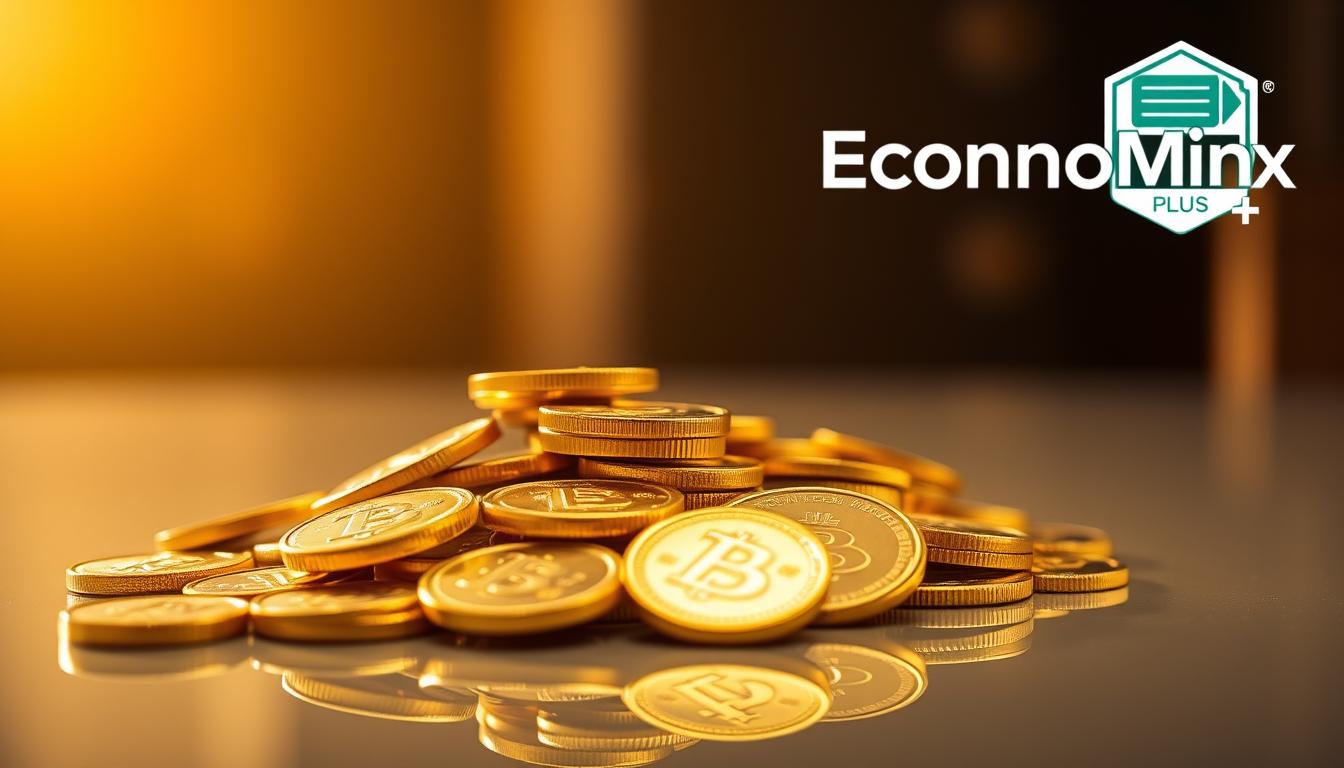
Long-Term Returns
Gold’s long-term performance is impressive. An ounce gold purchased for $20.63 in 1925 would be worth $2,062 today. While this growth pales in comparison to the S&P 500’s $300,538 increase, gold’s stability remains unmatched.
Jewelry demand accounts for 40% of gold’s total use, ensuring consistent value. Additionally, its high value per ounce makes storage efficient—$20,000 worth of gold weighs just one pound.
| Asset | 1925 Value | 2023 Value |
|---|---|---|
| Gold | $20.63 | $2,062 |
| S&P 500 | $20.63 | $300,538 |
ETFs like GLD offer liquidity, trading $1.5 billion daily. Mining stocks provide leverage, amplifying gold’s price movements by up to 3x. Whether you buy gold physically or through financial instruments, it’s a versatile asset.
“Gold is the ultimate hedge against uncertainty, offering stability when other assets falter.”
Including gold in a 60/40 portfolio strategy provides downside protection. Its 2023 performance, with a 12% gain during the banking crisis, highlights its resilience. For those looking to invest gold, its role as a wealth preservation tool is undeniable.
Investment Benefits of Silver
Silver stands out as a versatile asset with both industrial and investment value. Its unique properties make it essential in modern technology and a reliable option for diversifying your portfolio. Understanding its benefits can help you make informed decisions.
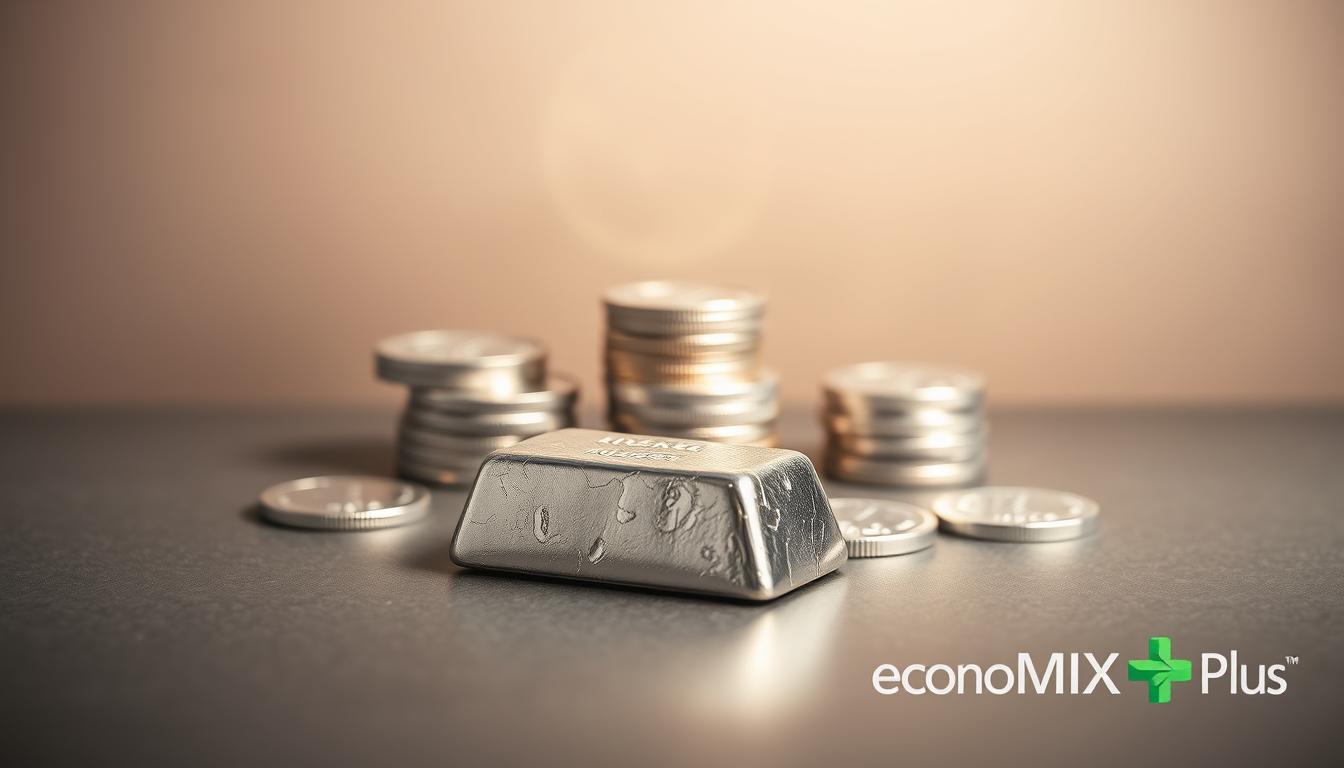
Industrial Demand
Silver’s industrial applications drive its demand. Over 33.9% of silver is used in electronics, from smartphones to AI chips. This is significantly higher than gold’s 10% industrial use. The growing AI industry, with a 19.1% CAGR through 2034, further boosts silver’s value.
Green energy is another key driver. Solar panel demand has increased by 27% year-over-year, requiring substantial silver supply. Additionally, 5G and IoT technologies rely on silver for its conductivity. These factors ensure steady demand for the metal.
Silver is often a byproduct of zinc and copper mining, with 75% of its supply coming from these sources. This limited production adds to its scarcity, making it a valuable asset for investors.
Volatility and Risk
Silver’s price is more volatile than gold’s, with a 30-day beta of 1.8 compared to gold’s 1.0. This higher volatility can lead to greater rewards but also increased risk. For example, during the 2011 crisis, silver peaked at $49 per ounce.
Retail accessibility is another advantage. At $25 per ounce, silver is more affordable for small investors. However, storage costs are higher—$100 annually for every $10,000 worth of silver. Recycling challenges also exist, with only an 18% recovery rate.
| Metric | Silver | Gold |
|---|---|---|
| Industrial Use | 33.9% | 10% |
| 30-Day Volatility | 1.8 | 1.0 |
| Storage Cost (per $10k) | $100/year | $50/year |
Silver’s unique blend of industrial demand and investment potential makes it a compelling choice. Whether you’re looking to buy ounce silver or diversify your portfolio, understanding its dynamics is key to success.
Which Sells Faster: Gold or Silver?
Understanding the speed at which precious metals can be converted into cash is crucial for investors. Liquidity and market demand are key factors that determine how quickly you can sell gold or silver. Let’s break down the metrics to see which metal offers faster transactions.
Liquidity Comparison
Gold typically has a lower buy/sell spread of 0.5%, compared to silver’s 1.2%. This makes gold slightly more cost-effective for frequent trading. When it comes to physical liquidation, gold can be sold within 24-48 hours, while silver may take 3-5 days due to its bulkier storage requirements.
ETFs also show a clear difference. The SPDR Gold Shares (GLD) trades $1.5 billion daily, while the iShares Silver Trust (SLV) handles $800 million. This higher liquidity in gold ETFs ensures quicker settlements, averaging 3 days versus silver’s 2 days.
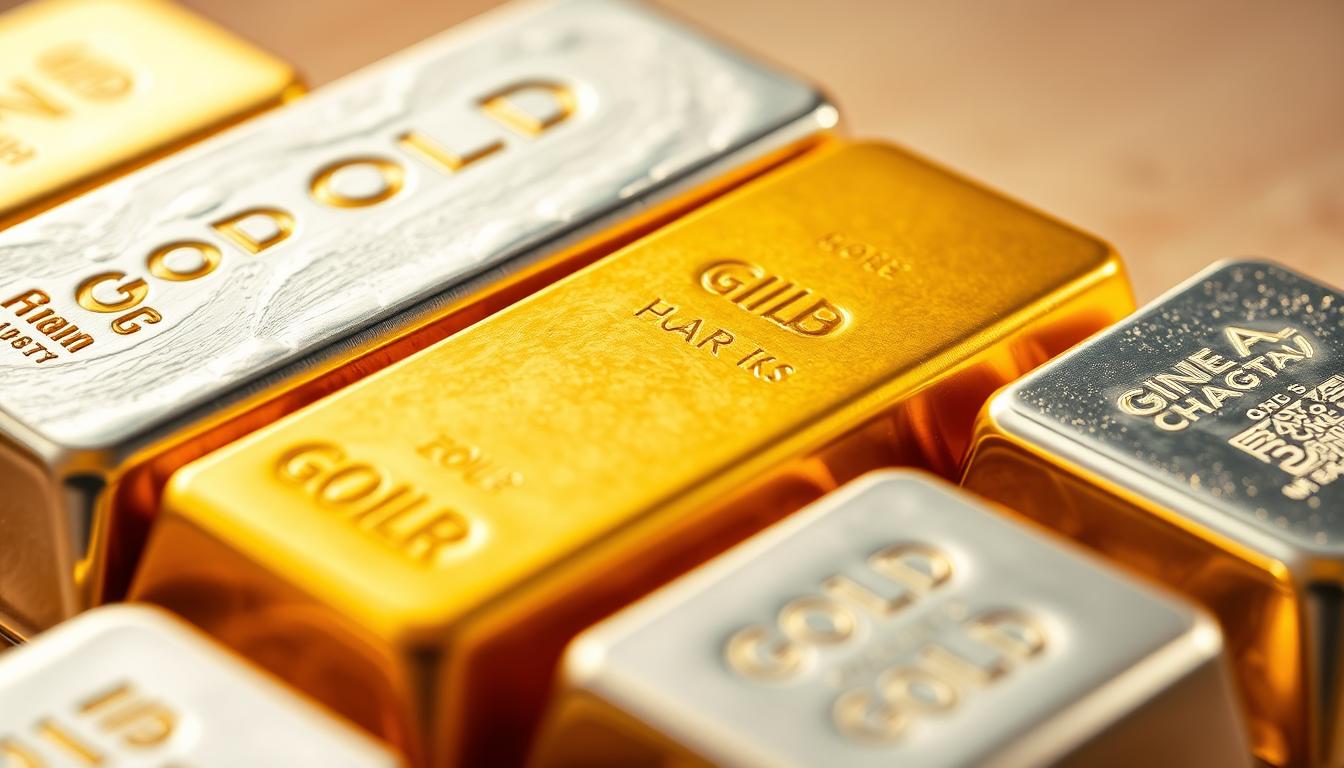
Market Demand
Gold’s demand spikes during crises, with a 300% volume increase in 2020. Its status as a safe-haven asset ensures consistent buyer interest. Silver, on the other hand, benefits from industrial demand across 50+ sectors, including electronics and green energy.
The gold-silver ratio, currently at 87:1, creates opportunities for ratio trading. This often leads to silver rebalancing demand, as investors seek to capitalize on price disparities. In 2024, silver’s turnover is 22% faster than gold’s, driven by its industrial applications.
| Metric | Gold | Silver |
|---|---|---|
| Buy/Sell Spread | 0.5% | 1.2% |
| Liquidation Time | 24-48 hours | 3-5 days |
| ETF Daily Volume | $1.5B (GLD) | $800M (SLV) |
| 2024 Turnover | 78% | 100% |
In summary, gold offers faster liquidation and lower trading costs, while silver’s industrial demand and higher turnover rate make it a dynamic option. Your choice depends on whether you prioritize stability or industrial growth.
How to Invest in Gold and Silver
Investing in gold and silver offers unique opportunities for diversifying your portfolio. These precious metals provide stability, growth potential, and protection against inflation. Whether you’re a seasoned investor or just starting, understanding your options is key to making informed decisions.
Physical Bullion
Physical ownership of gold and silver is a popular choice for many. Coins and bars are the most common forms. Coins, like the American Eagle, are widely recognized and easier to sell. Bars, on the other hand, often come with lower premiums, making them cost-effective for larger investments.
Storage is an important consideration. Home safes offer convenience, but insured vaults provide added security. For example, storing $20,000 worth of gold requires just one pound of space, while the same value in silver needs significantly more room.
When you buy gold or silver, always choose reputable dealers like APMEX or JM Bullion. This ensures authenticity and avoids counterfeit risks. Tax implications also vary—physical metals are often taxed as collectibles, so plan accordingly.
ETFs and Mining Stocks
Exchange-traded funds (ETFs) offer a convenient way to invest in these metals without physical ownership. The SPDR Gold Shares (GLD) has $58 billion in assets, while the iShares Silver Trust (SLV) holds $12 billion. GLD’s expense ratio of 0.40% is slightly lower than SLV’s 0.50%, making it a cost-effective option.
Mining stocks provide leverage, amplifying price movements by up to 3x. However, they come with higher risks due to operational and market factors. For example, a 10% rise in gold prices could lead to a 30% increase in mining stock values.
| Investment Option | Pros | Cons |
|---|---|---|
| Physical Bullion | Tangible asset, no counterparty risk | Storage and insurance costs |
| ETFs | High liquidity, low entry cost | Expense ratios, no physical ownership |
| Mining Stocks | High leverage potential | Operational and market risks |
Dollar-cost averaging is a smart strategy for both physical and financial investments. By spreading purchases over time, you reduce the impact of price volatility. This approach is ideal for building a diversified portfolio over the long term.
“Investing in gold and silver is not just about wealth preservation—it’s about creating opportunities for growth.”
Whether you choose to buy gold coins, invest in ETFs, or explore mining stocks, understanding these options helps you make confident decisions. Start small, stay informed, and watch your investments grow.
Conclusion
Deciding between these two precious metals requires careful consideration of their unique traits. In 2024, silver has shown faster turnover due to its industrial demand, while gold remains a stable choice for long-term wealth preservation. Balancing these assets in your portfolio can optimize both growth and security.
Experts often recommend allocating 5-15% of your portfolio to gold vs. silver. A hybrid strategy, such as 80% gold and 20% silver, can provide stability while leveraging silver’s growth potential. Monitoring the gold-silver ratio helps identify optimal entry points for investment.
Before you buy gold silver, consider storage and insurance costs. Gold’s compact nature makes it easier to store, while silver’s bulkier form requires more space. Avoid speculative trading in volatile markets, and focus on long-term strategies.
Take the next step by researching reputable dealers or ETFs. Whether you invest gold silver or diversify your portfolio, ongoing market monitoring ensures you stay ahead. Make informed decisions to secure your financial future.
